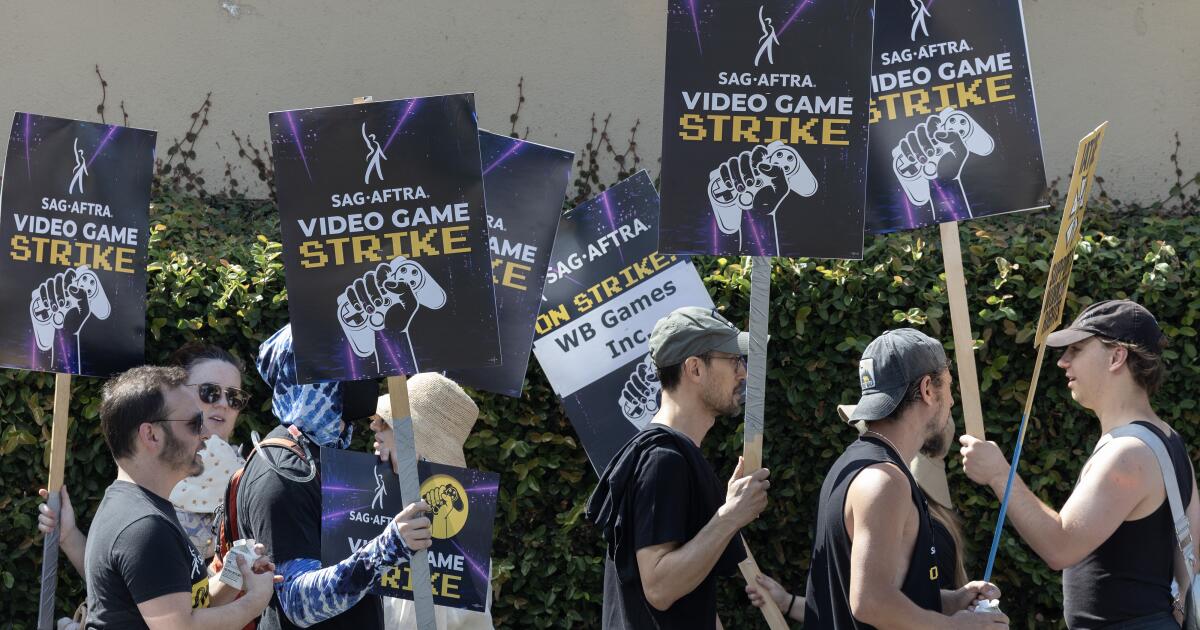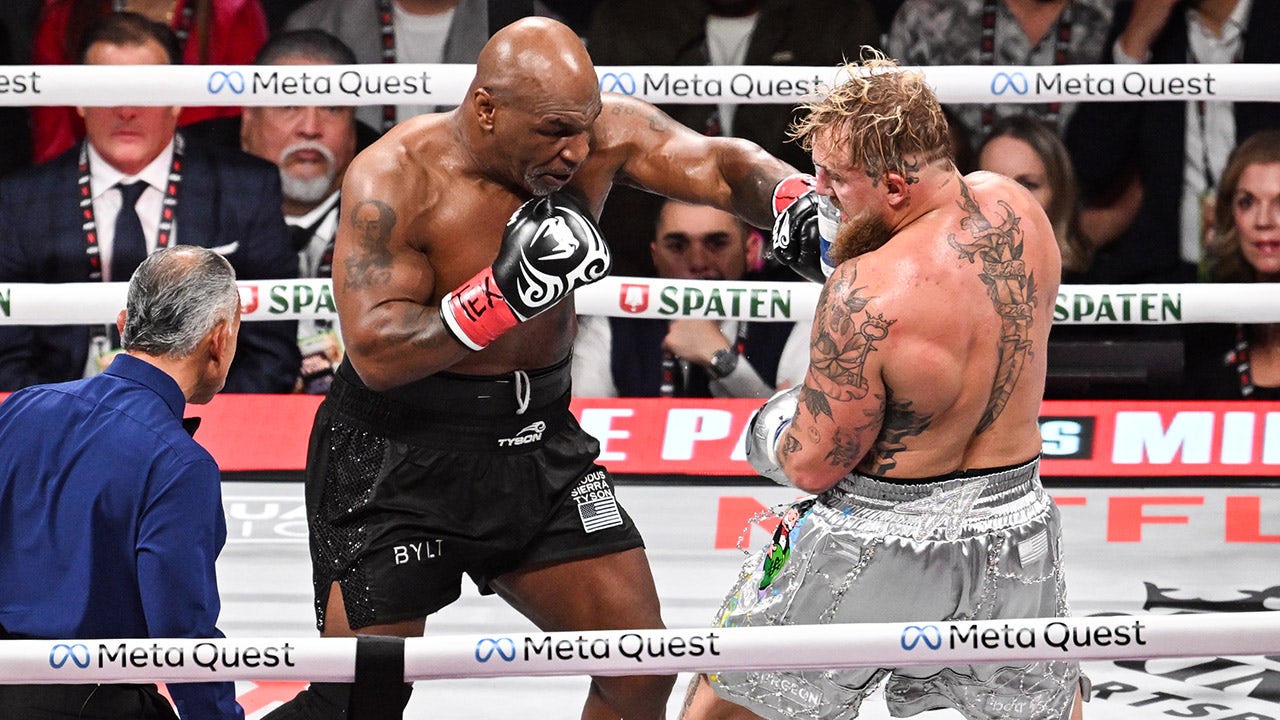Business
Video: PGA Tour Boss Describes What Led to His Medical Leave of Absence

1 00:00:00,000 —> 00:00:01,850 When you don’t sleep at night, 2 00:00:01,850 —> 00:00:05,210 when you’re constantly ruminating, 3 00:00:05,210 —> 00:00:08,540 you can’t do anything other than think about work 4 00:00:08,540 —> 00:00:10,490 for more than 10 minutes, 5 00:00:10,490 —> 00:00:12,740 you’re not eating right — 6 00:00:12,740 —> 00:00:15,830 all because you care 7 00:00:15,830 —> 00:00:19,830 so deeply about the game, 8 00:00:19,830 —> 00:00:24,127 the PGA Tour, our players, our history. 9 00:00:24,127 —> 00:00:26,911 All of that is something I take very personally 10 00:00:26,911 —> 00:00:27,930 and very seriously. 11 00:00:27,930 —> 00:00:30,700 And it had — it took its toll on me. 12 00:00:30,700 —> 00:00:38,890 So what I was thinking, to be 100 percent clear, 13 00:00:38,890 —> 00:00:40,520 was there’s something wrong. 14 00:00:40,520 —> 00:00:45,340 So on the morning of June 11, I went for a long walk. 15 00:00:48,060 —> 00:00:49,200 I prayed. 16 00:00:49,200 —> 00:00:52,068 I came home, and to my wife’s surprise, 17 00:00:52,068 —> 00:00:53,673 I said, “Honey, I need help.” 18 00:00:54,373 —> 00:00:56,430 And she said, “What do you mean?” 19 00:00:56,430 —> 00:00:57,790 I said, “I need help. 20 00:00:57,790 —> 00:01:00,138 I’m in a bad, bad, bad place.”

Business
Animation Guild reaches tentative deal with Hollywood studios

The union that represents animators has reached a new contract deal with the major Hollywood studios after more than three months of bargaining, securing pay increases and artificial intelligence protections.
The Animation Guild, aka IATSE Local 839, secured a tentative agreement with the Alliance of Motion Picture and Television Producers early Saturday, the union said Monday. The AMPTP represents the studios in labor relations.
The proposed contract now goes to the guild’s membership for ratification.
Negotiations began in August for a new contract that would increase wages, address the shrinking of crews and establish protections against AI, which many animators see as an existential threat to their craft. Studios are eager to save money amid an industry contraction, and AI tools in animation and special effects offer some obvious opportunities to do so.
The talks took place in a climate of increasing angst among entertainment industry workers who are contending with the studio cost-cutting, consolidation and the outsourcing of production.
An agreement was not reached within the initial five days allotted for bargaining. Negotiations resumed in September, and a deal was locked in after 16 nonconsecutive days of talks.
The guild touted several gains in the three-year deal, including increases to health and pension funds and wage increases of 7% in the first year, 4% in the second and 3.5% in the third. The pact features AI protections that include notification and consultation provisions; protections for remote work; and the recognition of Juneteenth as a holiday.
“After weeks of negotiations that covered months in the calendar, I am very proud of the agreement that we reached with the studios for our new contract,” Steve Kaplan, business representative for the Animation Guild, said in a statement. “Not only have we seen the inclusion of the advancements in the industry realized by the other Unions and Guilds, but we were able to address industry-specific issues in a meaningful way.”
The Animation Guild was founded in 1952 and represents more than 5,000 artists, technicians, writers and production workers in the animation industry.
Business
Hollywood unions are facing an uphill battle against Trump, AI and the slowdown

Video game performers. Visual effects artists. Animation workers. Intimacy coordinators.
More than a year after overlapping strikes by Hollywood writers and actors that rattled the entertainment industry, many technicians and craftspeople who operate outside of the spotlight are pressing their own demands for a better deal.
The sustained unrest among entertainment workers has added to the volatility that has gripped a film and TV business still recovering from the pandemic, prior labor disruptions and a persistent industry contraction.
The labor discord has been fueled by several forces, including the rising cost of living in Southern California, the outsourcing of jobs to other states and countries and the spread of artificial intelligence technology that many see as a threat to jobs.
It’s unclear, however, how the major media and entertainment companies will respond to the demands. Studios and other firms are under intense pressure to cut costs in an uncertain market that’s undergoing rapid change. And the election of Donald Trump, whose administration is expected to be generally pro-business, could give media executives latitude to take a harder line in bargaining.
“Clearly there’s going to be less protections for workers and less regulatory oversight for business practices going forward,” said David Smith, professor of economics at the Pepperdine Graziadio Business School. “When that goes into effect and whether that is a priority for the new Trump administration are open questions.”
Driving much of the labor tensions is the fear of AI, which many studio executives see as a necessary way to save money and stay ahead technologically.
AI is the biggest issue in the ongoing standoff between video game companies and performers covered by SAG-AFTRA, who’ve been on strike since July.
SAG-AFTRA is seeking a contract that will require game developers to obtain informed consent and compensate video game performers when using the technology to digitally replicate their voices, movements or likenesses.
The game companies have said that their AI proposal already contains robust protections that would require employers to seek prior consent and pay actors fairly when cloning their performances.
But the union maintains that the proposed language is not strong enough to protect on-camera performers, whose job is often to disappear into the characters they bring to life.
“We have worked hard to deliver proposals with reasonable terms that protect the rights of performers while ensuring we can continue to use the most advanced technology to create great entertainment experiences for fans,” said Audrey Cooling, a spokesperson for the game companies, in a statement earlier this year.
The union and the game developers most recently convened in late October for a few bargaining sessions but the walkout continues.
“All performers need AI protections,” said Duncan Crabtree-Ireland, national executive director and chief negotiator of the Screen Actors Guild-American Federation of Television and Radio Artists. “Everyone’s at risk, and it’s not OK to carve out a set of performers and leave them out of AI protections.”
All unions representing entertainment workers — including actors, writers, directors and crew members — have sought AI regulations in their latest contracts in an effort to shield their members from job displacement before it’s too late.
“All of these new applications for the creative content have changed the way that we value labor and the people involved,” said Sarah Odenkirk, an attorney for artists and lecturer at USC. “The unions’ jobs are to protect their members, and that becomes a complicated process when you’re talking about fundamental changes in technology and the delivery systems for content.”
Disputes over AI protections have also fueled tensions in Hollywood’s close-knit animation community. The issue remains a top priority of the Animation Guild, which resumed contract negotiations with the Alliance of Motion Picture and Television Producers last week. The union’s current contract, which originally expired July 31, was extended to Dec. 2.
Animation has powered some of the biggest box office hits of the last few years. But animators are widely seen as especially vulnerable to AI. In recent petitions to studios, animation workers have described the technology as an existential threat.
“The work that entertainment workers generate is so available for machine learning to steal,” said Allison Smartt, a field organizer at the animation guild. “Think about how that would make you feel.”
Visual effects workers, who play a pivotal role in bringing movies and TV shows to life, have also been clamoring for change.
Over the past few years, VFX artists have been unionizing under IATSE at a rapid pace. Staffers at companies such as Disney and Marvel have taken steps to secure their first contracts.
Scott Ross, who ran Industrial Light & Magic in the 1980s and was a founder of Digital Domain, says what’s motivating modern VFX workers to unionize is the sense that they’re “not given their due” by much of Hollywood.
“I’ve said it for years, and I’ll say it again: The new movie stars are the visual effects in the movie,” Ross said. “That’s what puts people’s butts in the seats. That’s what the marketing is about.”
The latest group to unionize are intimacy coordinators, a new category of workers who guide actors through sensitive material on sets. They voted unanimously in favor of joining SAG-AFTRA this month.
Erin Tillman, a sex educator and intimacy coordinator who has worked on “Yellowstone” and “Days of Our Lives,” said that intimacy coordinators and production assistants are often the only non-union workers employed on union sets.
“Why shouldn’t we get the same thing that all these other positions get when we’re literally taking care of the safety and well-being of performers at their most vulnerable?” Tillman said. “We just want to feel the same level of safety and be compensated in a way that feels in alignment with other crew positions on sets.”
The labor disquiet has been further fueled by a bleak jobs market.
California, where much of the unionized entertainment workforce resides, has been hit particularly hard, and many professionals have been out of work for more than a year.
At the same time, entertainment companies have been increasingly outsourcing production — flocking to the United Kingdom, Central Europe and other international destinations in pursuit of generous tax incentives. California Gov. Gavin Newsom recently proposed a significant boost in state tax credits to address the problem.
Last month, outgoing Sony Pictures CEO Tony Vinciquerra partially blamed new labor contract terms and higher below-the-line wages for “forcing productions out” of the United States at Mipcom, a TV industry convention held in Cannes. The effect of the strikes has been “far more severe … than anyone understands,” Vinciquerra said at the event.
“We tried to convince [the unions], we tried to talk to the unions about what … we thought would happen, and now it is happening,” he said. Other entertainment industry leaders have privately expressed similar frustrations.
But Crabtree-Ireland rebuked Vinciquerra’s remarks as “a cynical attempt to manipulate workers while masking the industry’s own business failures.” He told The Times that several executives at rival studios reached out to tell him they disagreed with Vinciquerra’s comments.
At a recent programming presentation in West Hollywood, HBO Chief Executive Casey Bloys said that contract terms are not “fundamentally going to change how we approach making shows.” He acknowledged, however, that production costs and tax incentives are always a factor when deciding whether to shoot a project in “Atlanta versus L.A. versus Canada.”
Times Staff Writer Meg James contributed to this report
Business
With 'Squid Game 2' and 'The Leopard,' Netflix doubles down on international appeal

Is Netflix a universal language?
The entertainment giant is counting on it as the company seeks to extend its lead in the global streaming business. On Monday, Netflix showcased its latest slate of international original programs, which are a key part of its strategy to attract and retain subscribers around the world.
The list includes the much anticipated sequel to the violent Korean-language drama “Squid Game,” Netflix’s most watched show ever; “The Leopard,” an Italian story about a prince in the 1860s; and the third season of the Japanese series “Alice in Borderland.” Another ambitious project: the first-ever TV adaptation of the classic novel “One Hundred Years of Solitude.”
The Los Gatos, Calif.-based streamer’s strategy is to create local-language shows and movies that appeal to audiences in specific individual markets and regions. If those programs blow up in popularity, Netflix can use its platform to book them in other countries including the U.S., which is what happened with the first “Squid Game” season and the Spanish-language thriller “Money Heist.”
International markets are an important source of the company’s subscriber and revenue growth. Netflix estimates that two-thirds of its audience of 650 million people live outside the U.S.
“We’re working with local talent to make shows and films that people in specific countries will love,” Netflix Chief Content Officer Bela Bajaria said at a presentation at Tudum Theater in Hollywood on Monday. “And we’re proving that great stories can come from anywhere and be loved by audiences everywhere.”
Netflix’s audiences have embraced international programming as viewers have become increasingly accustomed to reading subtitles at home. More than 70% of all viewing on Netflix happens with subtitles or dubbing, Bajaria said. Last year, about 13% of hours viewed in the U.S. involved non-English titles.
Bajaria said some people assume that the main goal is to create global hits, but that’s usually not the way at Netflix, which seeks to make shows and films that resonate in their home countries first.
The reason many of its shows work is that audiences appreciate the authenticity of local storytelling. “[W]hen you try to make something that appeals to everyone, you just end up making something that appeals to no one,” she said.
The company has a significant presence abroad, with 26 offices outside the U.S., working with more than 1,000 producers from more than 50 countries. Non-English titles that draw the biggest U.S. audiences are Korean, Japanese and Spanish stories, Bajaria said.
The prime example of the strategy working is “Squid Game,” which captured 265.2 million views in its first 91 days on Netflix, according to company data. The series’ second season comes out on Dec. 26.
Will viewership for the second season reach the heights of the original?
Minyoung Kim, Netflix’s vice president of content for Asia Pacific, was reluctant to speculate but noted that Netflix’s number of subscribers has grown since “Squid Game” came out in 2021 and that the next season is packed with drama.
“I have a lot of confidence that our members who watched Season 1 will definitely love Season 2 and those who actually have not been introduced will find Season 2 will also resonate with them as well,” Kim said in an interview.
Netflix executives say their commitment to telling authentic local stories has helped them gain the trust of creators. Next month, Netflix will release Part 1 of “One Hundred Years of Solitude,” based on the sprawling magical realism novel by Gabriel García Márquez about the rise and fall of a fictional town in Colombia.
Francisco Ramos, vice president of Latin American content, said in a presentation video that previously no one had ever tried to adapt the book into a series or film, nor had the García Márquez family approved any adaptations.
“But we were able to, thanks to our commitment with the family to film in Colombia, in a series format to honor the original structure of the book, and in Spanish for authenticity,” Ramos said.
-

 Business1 week ago
Business1 week agoColumn: Molly White's message for journalists going freelance — be ready for the pitfalls
-

 Science6 days ago
Science6 days agoTrump nominates Dr. Oz to head Medicare and Medicaid and help take on 'illness industrial complex'
-

 Politics1 week ago
Politics1 week agoTrump taps FCC member Brendan Carr to lead agency: 'Warrior for Free Speech'
-
/cdn.vox-cdn.com/uploads/chorus_asset/file/25739950/247386_Elon_Musk_Open_AI_CVirginia.jpg)
/cdn.vox-cdn.com/uploads/chorus_asset/file/25739950/247386_Elon_Musk_Open_AI_CVirginia.jpg) Technology1 week ago
Technology1 week agoInside Elon Musk’s messy breakup with OpenAI
-

 Lifestyle1 week ago
Lifestyle1 week agoSome in the U.S. farm industry are alarmed by Trump's embrace of RFK Jr. and tariffs
-

 World1 week ago
World1 week agoProtesters in Slovakia rally against Robert Fico’s populist government
-

 Health2 days ago
Health2 days agoHoliday gatherings can lead to stress eating: Try these 5 tips to control it
-

 News1 week ago
News1 week agoThey disagree about a lot, but these singers figure out how to stay in harmony


















